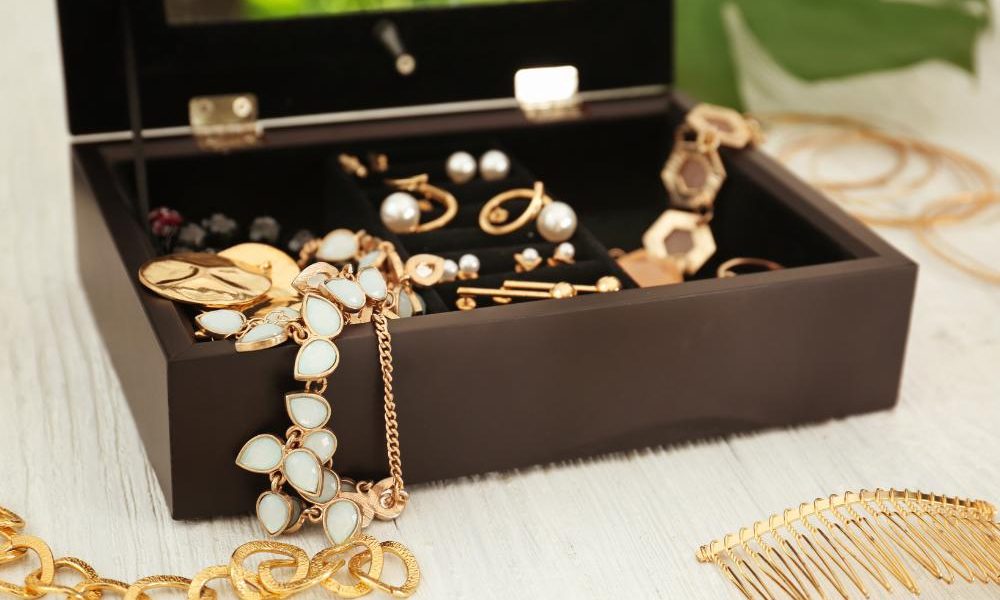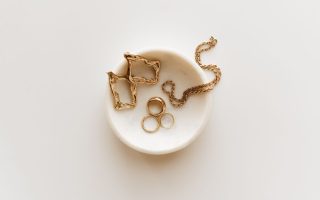Jewelry has been a significant part of human culture for thousands of years. It serves as a form of self-expression, a symbol of status, and a reflection of the times. This article delves into the fascinating history of jewelry, exploring its ancient origins and modern evolutions.
Ancient Origins of Jewelry
The Beginnings
Jewelry dates back to prehistoric times when early humans created adornments from shells, bones, and stones. These primitive pieces were likely used for both decorative and ritualistic purposes. Jack Ogden, an archaeologist and jewelry historian, says, “Jewelry is not just about adornment; it’s a window into the past, revealing the cultural, social, and economic practices of ancient civilizations” (Jewellery of the Ancient World).
Mesopotamia and Egypt
In Mesopotamia, around 3000 BCE, the Sumerians crafted jewelry from gold, silver, and semi-precious stones. These pieces were not only decorative but also had religious significance, often buried with the dead to accompany them in the afterlife.
Egyptian jewelry is perhaps the most iconic from ancient times. Gold was abundant and used extensively to create elaborate pieces adorned with lapis lazuli, turquoise, and carnelian. Jewelry played a significant role in Egyptian society, symbolizing power and religious beliefs. The famous burial mask of Tutankhamun, adorned with gold and precious stones, is a prime example of Egyptian craftsmanship.
Greece and Rome
Greek jewelry, known for its beauty and intricacy, often depicted gods and goddesses. The Greeks were skilled in creating cameos and intaglios, which were used in rings and brooches.
The Romans, influenced by the Greeks, developed their unique styles. They popularized the use of gold and gemstones, and their jewelry often depicted animals and mythological creatures. Rings were especially significant in Roman culture, used to signify status and authority.
Personal Anecdote
I remember visiting the British Museum and being mesmerized by the ancient Egyptian jewelry on display. The intricate designs and vibrant colors of the pieces were breathtaking, and it was fascinating to think about the rich history and culture behind them.
Medieval and Renaissance Jewelry
The Middle Ages
During the Middle Ages, jewelry became a symbol of wealth and status among the European elite. Nobility adorned themselves with pieces made from gold, silver, and precious gems. Religious motifs were prevalent, and jewelry often included crosses and other Christian symbols.
The Renaissance
The Renaissance era marked a period of innovation and creativity in jewelry design. Techniques such as enameling and the use of gemstones became more refined. Jewelry was not only a status symbol but also a form of artistic expression. Claire Wilcox, Senior Curator of Fashion at the Victoria & Albert Museum, notes, “Jewelry has always been a powerful symbol of status, wealth, and personal expression. It has evolved over time, reflecting changing tastes, technologies, and societal values” (Jewellery: From Antiquity to the Present).
The 18th and 19th Centuries
Georgian Era
The Georgian era (1714-1837) saw the use of gold, silver, and precious stones in elaborate designs. This period was characterized by intricate metalwork and the use of colorful gemstones. Pieces often included motifs such as flowers, ribbons, and bows.
Victorian Era
The Victorian era (1837-1901) brought about significant changes in jewelry design. Queen Victoria’s love for jewelry influenced the styles of the time. Mourning jewelry, made from jet and black enamel, became popular after the death of Prince Albert. Lockets and brooches containing hair or photographs of loved ones were also common.
Personal Anecdote
My grandmother used to wear a beautiful Victorian brooch that had been passed down through generations. It was a delicate piece with intricate detailing and a small locket for a photo. She would always tell stories about its history and the women in our family who had worn it before her.
The 20th Century and Beyond
Art Nouveau and Art Deco
The early 20th century saw the rise of the Art Nouveau movement, characterized by flowing lines, natural forms, and the use of enamel and semi-precious stones. This style was a departure from the more rigid designs of the past.
The Art Deco movement of the 1920s and 1930s introduced a new level of sophistication and elegance in jewelry design. Geometric shapes, bold colors, and the use of platinum and diamonds became hallmarks of this era.
Modern Jewelry Design
Today’s jewelry industry is a blend of traditional techniques and modern innovations. Designers draw inspiration from ancient motifs and incorporate them into contemporary styles. Ulla Johnson, a fashion designer, states, “Ancient jewelry techniques and motifs continue to inspire modern designers. There’s a timeless beauty and elegance in these pieces that transcends time and trends” (Vogue).
Ethical Jewelry and Sustainability
In recent years, there has been a growing awareness of the ethical implications of jewelry production. Consumers are increasingly seeking out sustainable and fair trade options. Pippa Small, an ethical jewelry designer, emphasizes, “Sustainable and fair trade jewelry is about creating a positive impact on the communities and environments where precious materials are sourced. It’s about empowering artisans and ensuring fair wages, while minimizing environmental harm” (The Jewellery Editor).
Unique Insights on Jewelry History
Cultural Significance
Jewelry has always played a significant role in different cultures. For example, in India, jewelry is an integral part of daily life and religious ceremonies. Gold jewelry is often passed down through generations and is a symbol of wealth and prosperity.
Technological Advancements
The evolution of jewelry design has been closely tied to advancements in technology. The development of new tools and techniques has allowed jewelers to create more intricate and durable pieces. For example, the invention of the modern diamond cutting wheel in the 15th century revolutionized the way diamonds were cut and set in jewelry.
Personal Expression
Beth Bernstein, a jewelry historian and author, beautifully sums it up: “The history of jewelry is a fascinating tale of human creativity, ingenuity, and the desire to adorn oneself. From ancient amulets to modern statement pieces, jewelry has always played a significant role in our lives” (If These Jewels Could Talk).
Conclusion
The history of jewelry is a rich tapestry of human culture, creativity, and expression. From the ancient civilizations of Mesopotamia and Egypt to the modern-day designers drawing inspiration from the past, jewelry continues to evolve and captivate. Understanding the origins and evolution of jewelry not only deepens our appreciation for these beautiful adornments but also highlights their cultural and historical significance. As we continue to innovate and create, the timeless allure of jewelry remains a testament to our enduring desire to adorn and express ourselves.
In the words of Claire Wilcox, “Jewelry has always been a powerful symbol of status, wealth, and personal expression. It has evolved over time, reflecting changing tastes, technologies, and societal values” (Jewellery: From Antiquity to the Present). So whether you’re wearing a simple gold ring or an elaborate diamond necklace, remember that each piece of jewelry carries with it a rich history and a story waiting to be told.




